Weekly Index

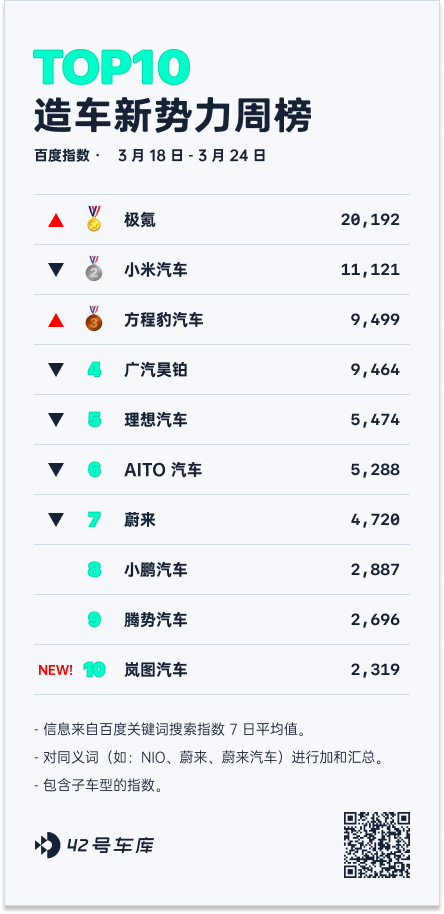
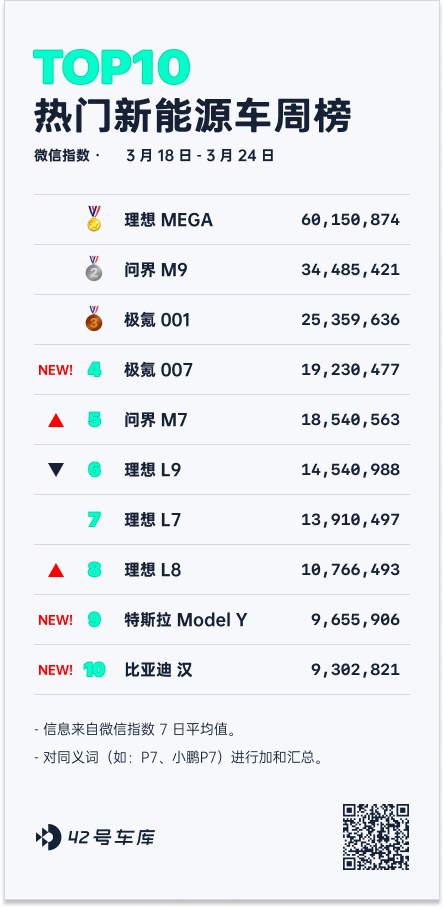
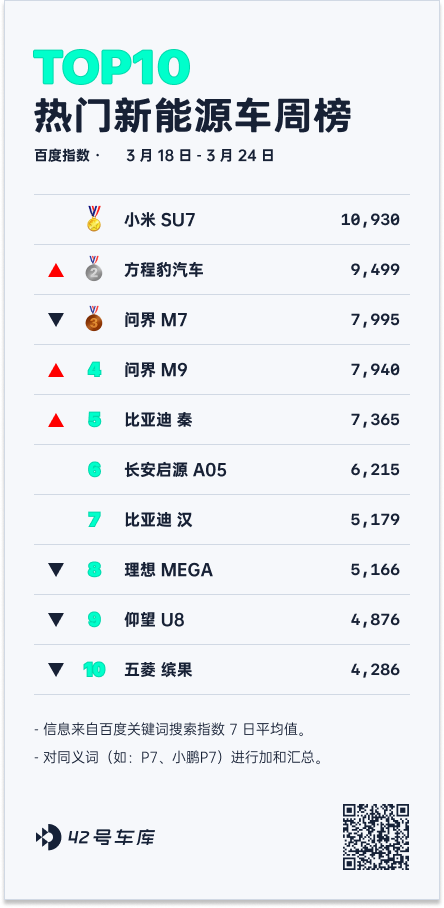
Weekly News Highlights
DJI Car Navigation: 7,000 Yuan for City Navigation
Speaking at the China Electric Vehicles 100 People Forum on March 17, the head of DJI Car Navigation, Shen Shaojie, stated that using a 7V + 100 TOPS solution, DJI can achieve city navigation without maps. This solution will be equipped in vehicles of the 150,000 class this year, with the hardware cost to manufacturers being only 7,000 yuan.
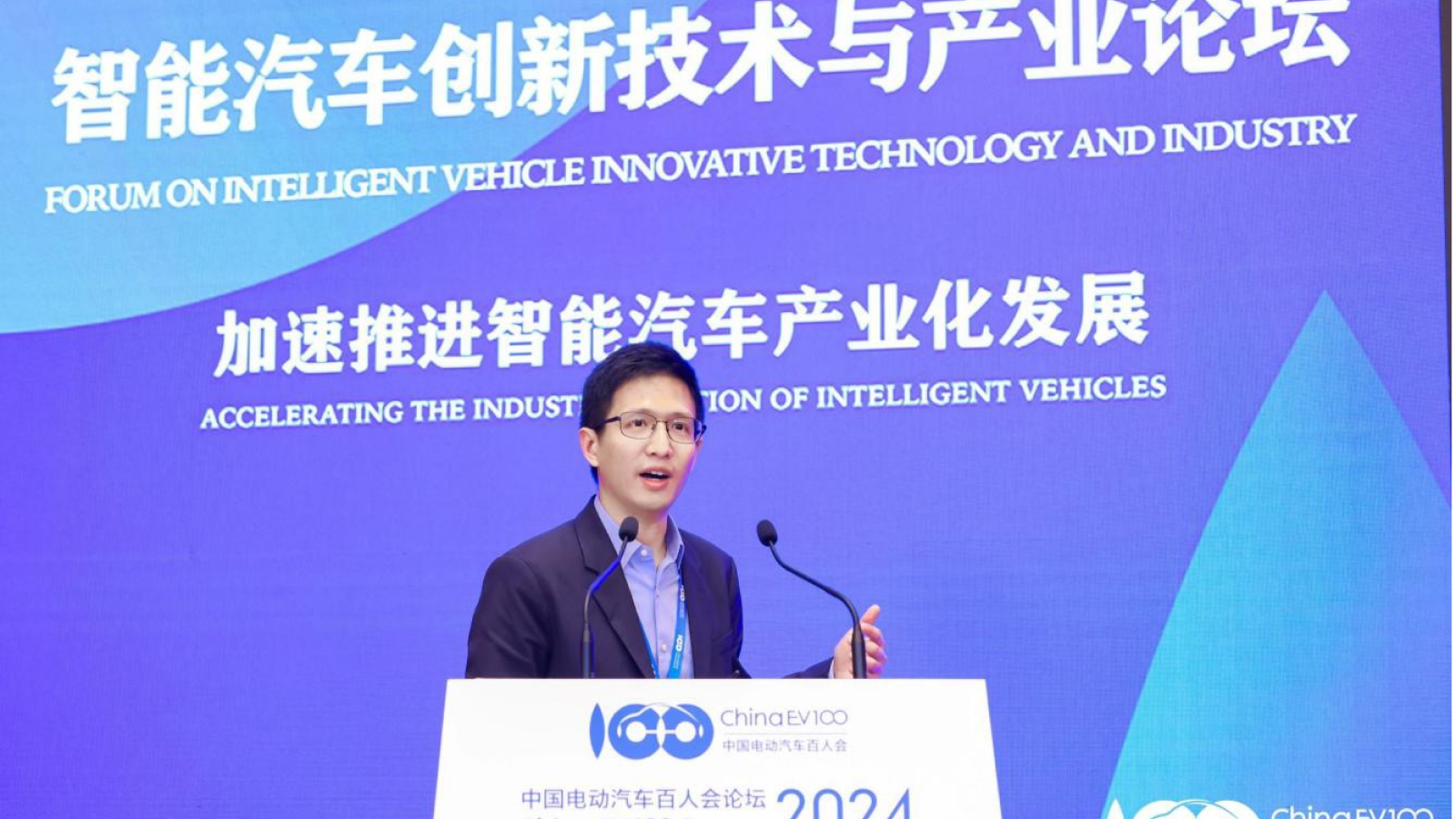
Let’s first look at this 7,000 yuan cost. Since DJI’s hardware cost to manufacturers is 7,000 yuan, the price to consumers from manufacturers will not be a number that is particularly difficult for buyers of 150,000-class vehicles to accept. It’s also not ruled out that some manufacturers may take the initiative to discount in order to boost sales.
In comparison, if consumers choose vehicles that support city navigation from models priced above 200,000 yuan, they will have to pay at least an extra 20,000 yuan. For brands such as AITO and Xpeng, consumers need to pay extra 20,000 yuan and up for the smart driving version, while the price for Tesla’s full self-driving capability is as high as 64,000 yuan. The sheer price difference compared with the 7V + 100 TOPS solution is apparent.
Next, let’s look at the 7V + 100 TOPS solution itself. According to Shen Shaojie, 7V refers to 7 cameras, including a pair of front sight 8 million pixel binocular inertial navgations, a rear sight 3 million pixel monocular, and four 3 million pixel surround view cameras.
In terms of algorithms, the 7V + 100 TOPS solution uses a road topology perception model and a prediction decision-making joint model based on Transformer, as well as a 4D scene flow based on binocular + omnidirectional fisheye.
In addition, the 7V + 100 TOPS solution can be used with millimeter-wave radar and ultrasonic radar, or without. Moreover, the entire solution does not depend on high-precision maps, does not differentiate power forms, and can be equipped with both electric and gasoline cars, with extremely high flexibility.
Clearly, the 7V + 100 TOPS solution from DJI Car Navigation can be deemed the universal choice among 150,000-class cars.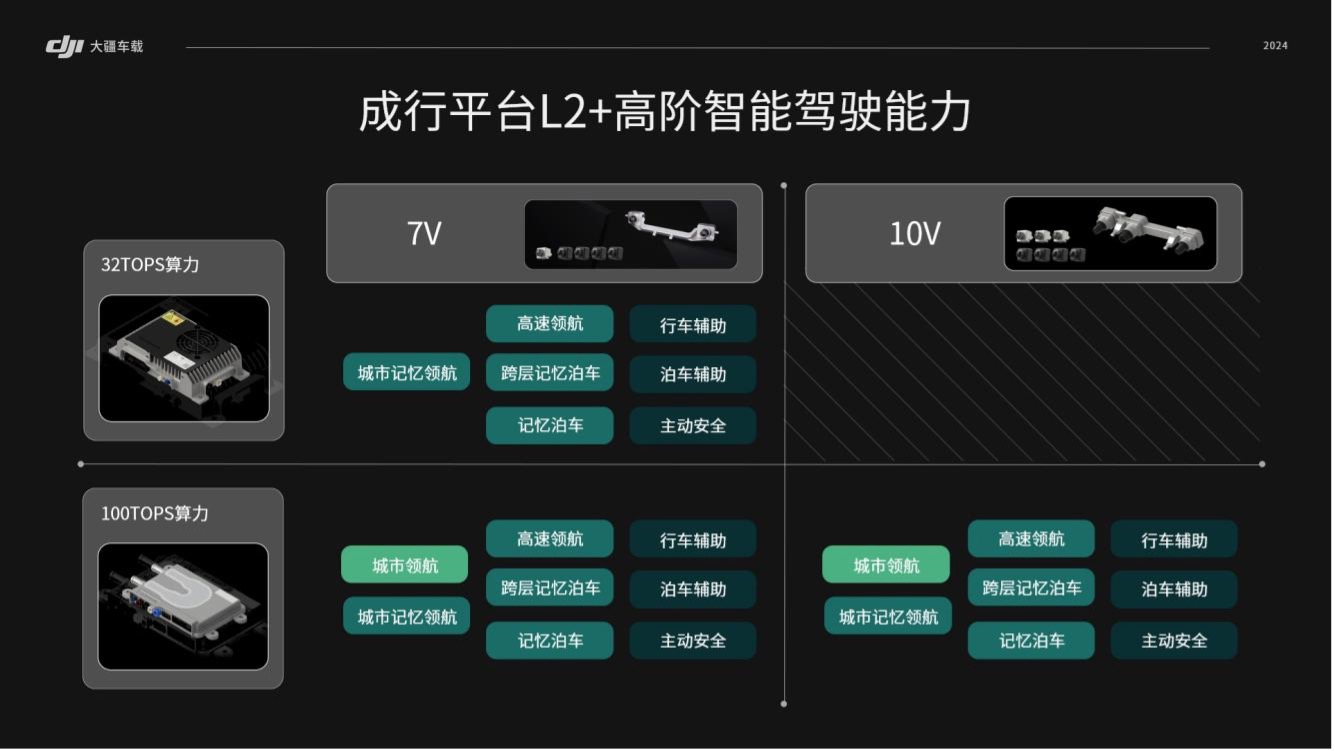
The 7 V + 100 TOPS solution is actually from the Chengxing platform officially announced by DJI Car Module during last year’s BaiRen Conference. The Chengxing platform encompasses DJI Car Module’s full-stack software and hardware design and delivery solutions, and it’s the central product in their intelligent driving solutions for automobile manufacturers.
By this year’s BaiRen Conference, the Chengxing platform has evolved into 3 versions, including:
- Basic version 7 V + 32 TOPS;
- Upgraded version 7 V + 100 TOPS;
- High-end version 10 V + 100 TOPS.
Reportedly, the basic version can implement high-speed navigation, memory parking, and other intelligent driving features, which have been mass-produced and mounted in versions such as Yun Duo Ling Xi, iCAR 03, and Yue Ye Plus.
Starting from this year, DJI Car Module will gradually promote the standardization of the basic version on car models ranging from 80,000 to 150,000 Yuan.
In comparison to the basic version, the sensing hardware of the upgraded version has not changed. The chip has just been switched from Texas Instruments TDA4-VH to Qualcomm Snapdragon 8650, thus increasing the computing power to 100 TOPS. This enables it to implement more advanced navigation in urban areas, suitable for car models above 150,000 Yuan.
The upgraded version will be implemented in new mass-produced cars this year, and DJI Car Module plans to standardize the upgraded version on cars in the 150,000 Yuan range within the next two years.
Compared to the upgraded version, the high-end version maintains the Qualcomm Snapdragon 8650 chip and enhances the sensing hardware from 7 V to 10 V. This involves changing the front sight inertial binoculars in the 7 V to “inertial trinocular and laser radar assembly” – including a pair of inertial stereo binoculars, a long-focus monocular, and a laser radar, which can achieve L3-level automatic driving.
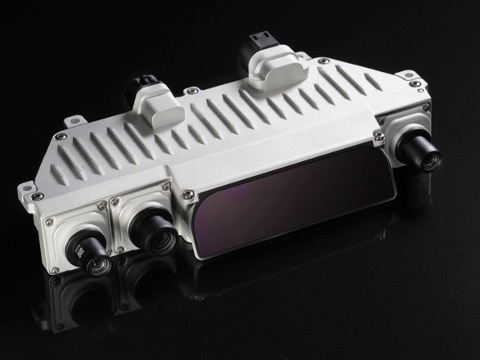
DJI Car Module expects to apply the high-end version to car models around 250,000 Yuan by 2026, and to standardize the high-end version on 200,000 Yuan range car models within 3 years.
It’s worth noting that, based on the characteristic of completely identical sensing hardware in the basic and upgraded versions, the basic version can be switched to the upgraded version by a pin-to-pin method of changing chips.
In general, DJI Car Module’s intelligent driving solution primarily targets cost-effectiveness and high volume, and automakers can choose as per their needs. Regarding DJI Car Module’s intelligent driving solution, Shen Shaojie commented at the BaiRen Conference forum:
Some people say that what DJI Car Module does best is “carving on sesame”, I think this is half right, the sesame is too small, what we really achieved is not carving on sesame, but carving a forest on a watermelon.
Hong Qi EH7: A new energy strategic starting point at 230,000 Yuan
On March 20, Hong Qi officially released the first car model under the All in New Energy strategy – Hong Qi EH7. This car is positioned as a B-class pure electric car. Hong Qi EH7 this time released a total of 5 models, namely EH7 600 Pro, 690 Pro, 640 Pro+ four-wheel drive version, 820 Pro, and 760 Pro+ four-wheel drive version. The price ranges from 229,800 – 309,800 Yuan, which is currently one of the most competitive markets. The specific configuration prices are as follows:* 600 Pro is priced at 229,800 Yuan;
- 690 Pro is priced at 239,800 Yuan;
- 640 Pro+ four-wheel drive is priced at 259,800 Yuan;
- 820 Pro is priced at 269,800 Yuan;
- 760 Pro+ four-wheel drive is priced at 309,800 Yuan.
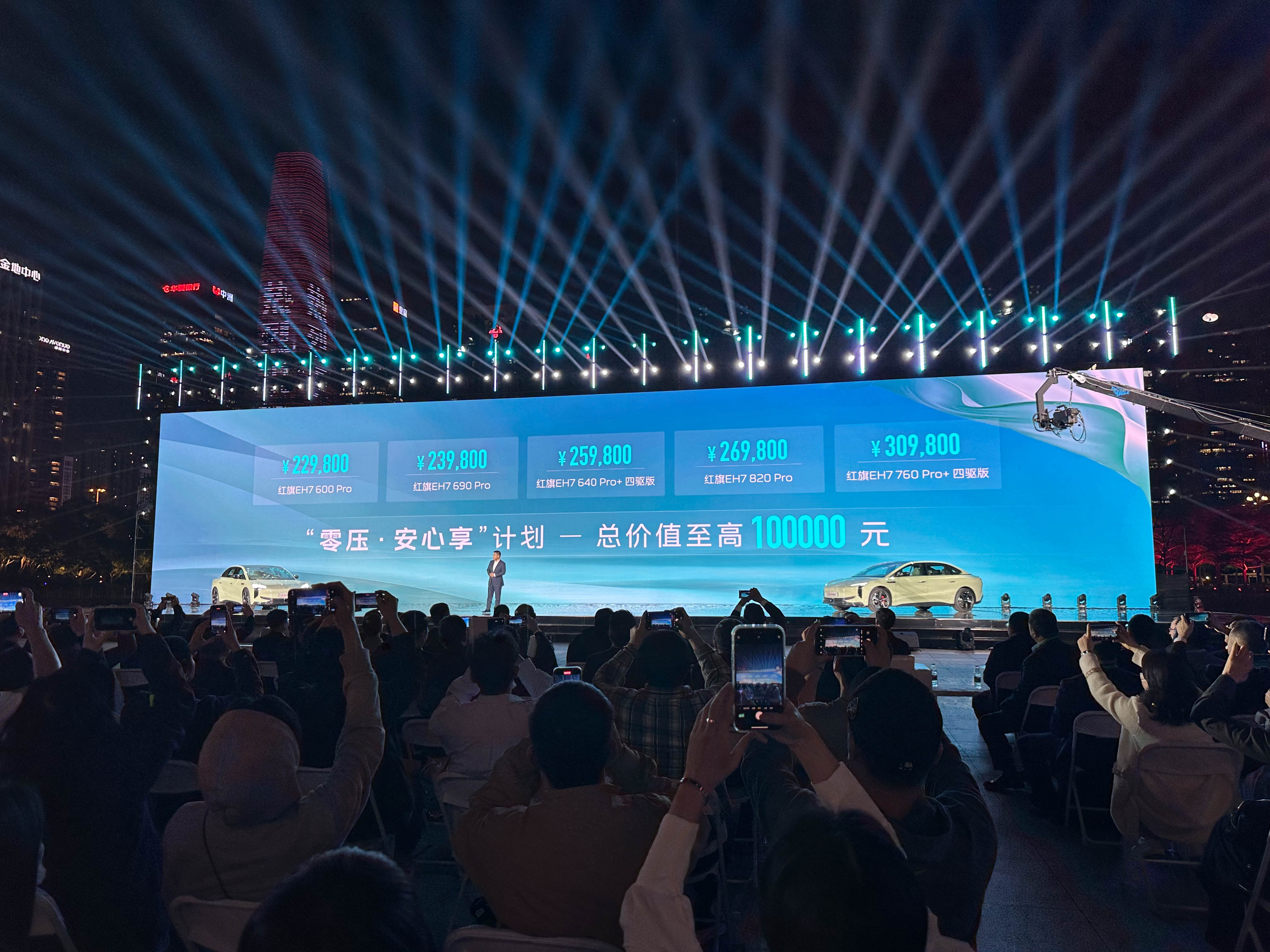
Currently, purchase of all models excluding the base comes with complimentary premium exterior lighting, interior mood upgrade, advanced sound system, and a comfort heating package worth 30,000 Yuan.
In addition, the purchase of the top-of-the-range model also includes an AR-HUD, cabin camera, kick tailgate, intelligent fragrance, and matrix headlights worth 12,000 Yuan.
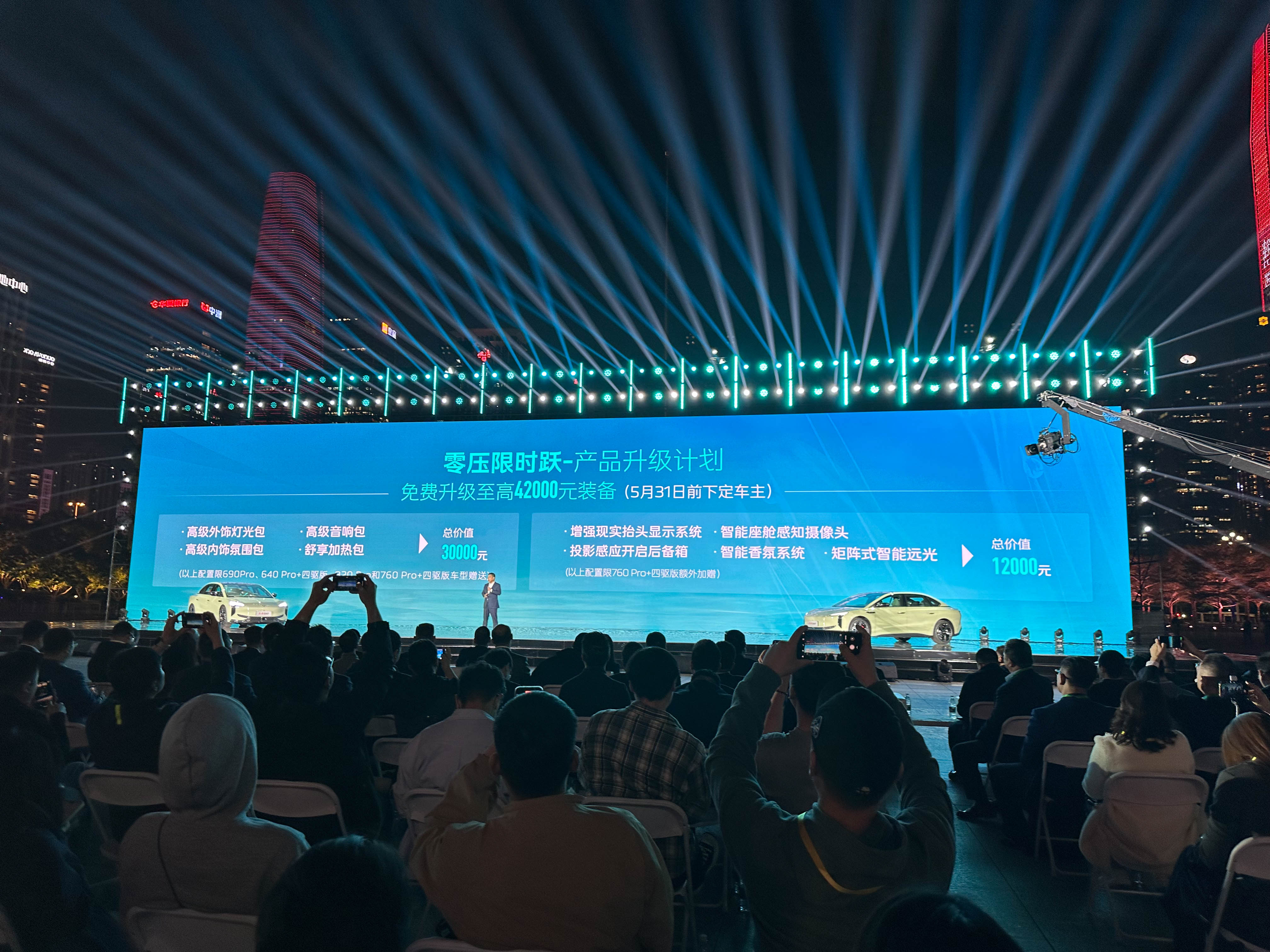
The significant differences between these vehicles often tend to be in terms of power and battery life. Firstly, the single-motor version comes standard with a 253KW motor on the rear axle; on the four-wheel drive, an additional 202KW motor is added to the front axle, yielding a maximum system output of 455KW.
In terms of battery capacity, the entry level 600 Pro model is equipped with a 75kWh battery, while the mid-range models (690 Pro, 640 Pro+ four-wheel drive version) carry an 85kWh battery, and the top models (820 Pro, 760 Pro+ four-wheel drive version) are fitted with a large 111kWh battery.
Inside the cabin, the Hong Qi EH7 is standard fitted with an 8155 infotainment chip ensuring responsive and smooth operation. It is also equipped with AR-HUD, heated seats, pillow sound system, electric steering wheel adjustment and ultrafiber material seats.
Quick Review:
The launch of the Hong Qi EH7 undeniably showcases Hong Qi’s commitment and capability in the new energy strategy. As a Class B electric vehicle, the EH7’s positioning and price range targets the most fiercely competitive market segment. With the release of five models covering the price range of 229,800-309,800 Yuan, each model reveals unique configurations and performance, accurately catering to the diverse consumer demands.
The exterior design and interior configuration of the Hong Qi EH7 manifest Hong Qi’s innovative capability and keen trend insight. The distinctive design language bestows a unique and modern exterior to the EH7. Meanwhile, the cockpit is equipped with a 6-inch + 15.5-inch curvature dual screen to provide consumers with a satisfactory vehicle user experience.
In terms of power performance, the Hong Qi EH7 is impressive. The single motor version comes standard fitted with a rear axle mount of 253KW, while the four-wheel drive features an additional 202KW motor, hitting a system max output of 455KW. As for battery capacity, ranging from 75KWh to 111KWh, it caters for the varying range requirements of different consumers.
The release of the Hong Qi EH7 represents not only a significant step in the new energy strategy of the Hong Qi brand but also a significant attempt in China’s new energy automobile market.
Wuling Introduces New Energy Vehicle – “Yang Guang”
New energy vehicles are becoming the core driving force of the automotive industry transformation, especially in the field of commercial vehicles, this trend is particularly evident. As one of the world’s largest automobile markets, China is actively promoting the high-quality development of the new energy commercial vehicle industry. Against this backdrop, Wuling Motors has launched its latest new energy commercial vehicle – Wuling Yang Guang, aiming to seize new market opportunities.
From a technical standpoint, Wuling Yang Guang demonstrates its competitiveness in terms of endurance, charging, and vehicle body design. The vehicle offers a range of 230 km and 300 km, using liquid cooling technology and ultra-lightweight structure technology. This not only ensures the stability and safety of the battery but also enhances the overall performance of the vehicle. The fast-charging function can charge the battery from 30% to 80% in 30 minutes, greatly improving the vehicle’s usage efficiency.
The dimensions and wheelbase design of Wuling Yang Guang ensure ample cargo volume, while the design of the 270° tailgate and sliding side doors provides maximum convenience and reduces the difficulty of loading and unloading goods. Moreover, the vehicle’s load capacity, tyre configuration, and the matching of a high-power motor, all demonstrate Wuling’s professionalism in the field of commercial vehicles.
In terms of comfort and safety, Wuling Yang Guang also spares no effort. The design of the central entertainment screen, combined instrument panel, and storage space enhances the driver’s experience, while the use of ABS+EBD, EPS power steering system, high-strength body steel, as well as the fitting of LED headlights and fog lights, all provide a powerful guarantee for the safety of the vehicle.
Wuling Motors also offers customized solutions for different industry needs, including cold chain vehicles, energy supplement vehicles, and express delivery vehicles, demonstrating its deep understanding of market segmentation. Wuling Yang Guang has launched three models:
- 230 km practical model, priced at 71,800 Yuan;
- 300 km practical model, priced at 79,800 Yuan;
- 300 km comfortable model, priced at 83,800 Yuan.
With over 40 years of manufacturing experience, Wuling Motors’ launch of Wuling Yang Guang, not only responds to the demand for the new energy commercial vehicle market but also reflects its technological innovation and market insight. With the continuous expansion of the new energy vehicle market, Wuling Yang Guang is expected to become a key competitor in the field of commercial vehicles.
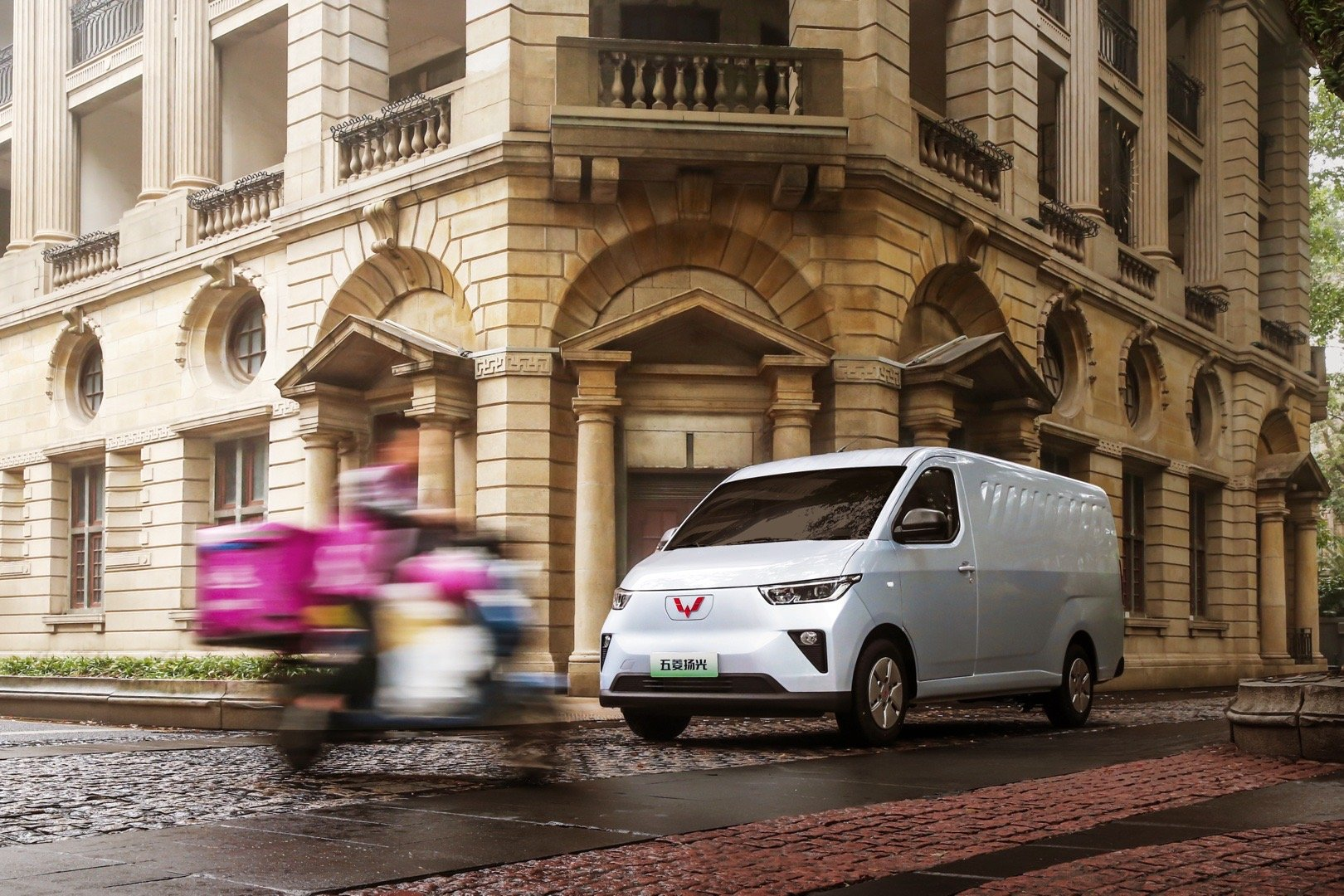
Quick review:
The release of Wuling Yang Guang is undoubtedly a significant attempt by Wuling Motors in the new energy market. From a technical and design standpoint, this car shows excellent competitiveness in terms of endurance, charging, and body design, and also puts a lot of effort into comfort and safety. EspeciallyIt is worth mentioning that Wuling Automobile provides customized solutions tailored to different industries, undoubtedly showing a deep understanding and accurate grasp of market segmentation. However, how the market responds and how the sales are performing, are the focus of our attention. Only by truly entering the market can we test the strength and market acceptance of Wuling Yangguang.
This article is a translation by AI of a Chinese report from 42HOW. If you have any questions about it, please email bd@42how.com.
